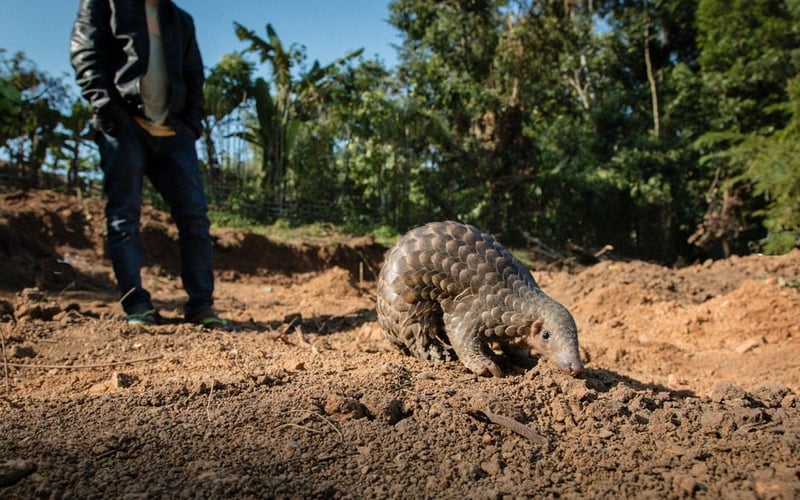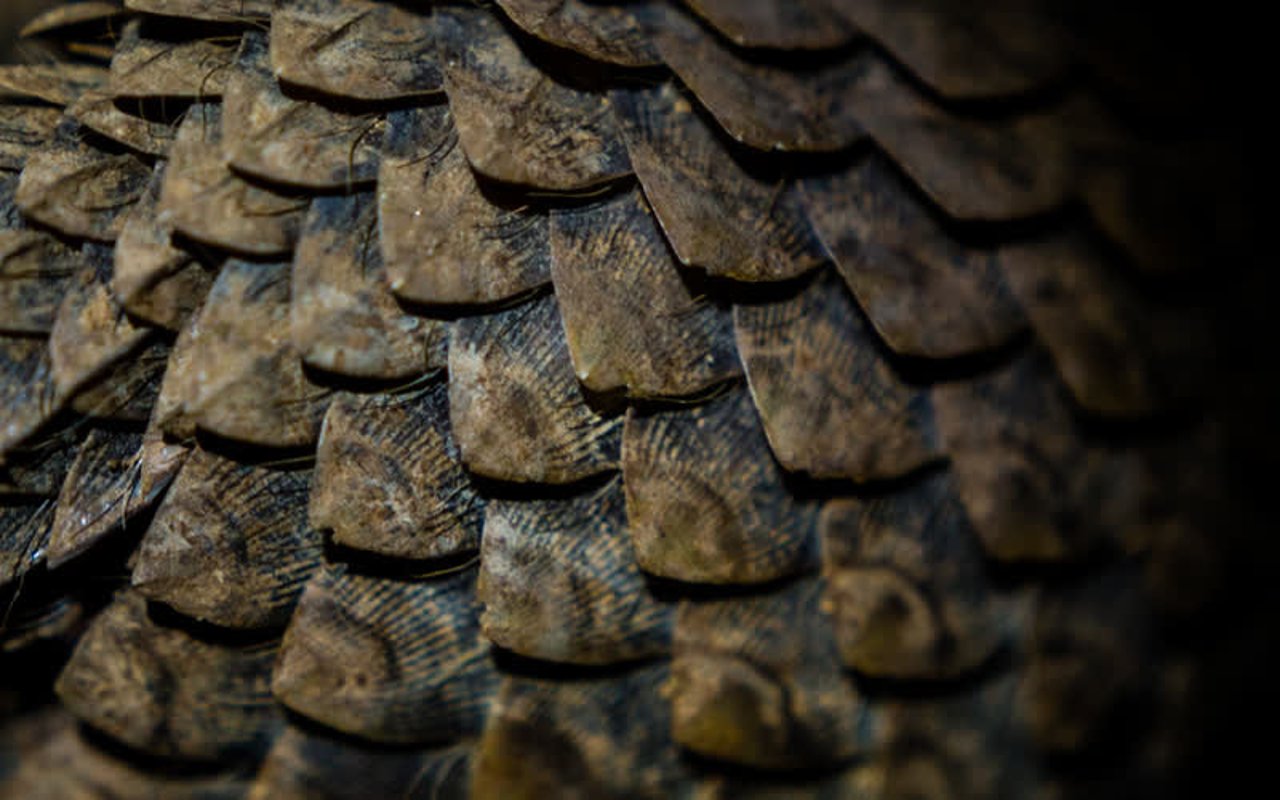
Pangolin poaching: the brutal reality
News
Video footage shows the horrifying moment a terrified pangolin is killed for its scales in Assam, India. Pangolin scales are sold on the black market for traditional Asian medicine
The upsetting mobile phone footage was captured by an undercover researcher working for us and WildCRU (Wildlife Conservation Research Unit, University of Oxford).
Together, we completed a two-year study into traditional hunting practices in Assam.
WARNING GRAPHIC CONTENT.
A horrifying ordeal
The terrified pangolin hides from hunters in a hollowed-out tree, clinging for her life as her tail is tugged.
The hunters use axes to cut the tree, but failing to remove the desperate animal, they light a fire to smoke her out.
As the pangolin starts to suffocate and lose consciousness, it makes a bolt for freedom but is captured, bagged and taken to a hut where the next stage of the ordeal takes place.
The pangolin is repeatedly bludgeoned with a machete until it can barely move. While bleeding, it is then thrown into a cauldron of boiling water, where its tragic struggle comes to an end.
The world’s most trafficked mammal
Pangolins have earned the reputation as one of the most illegally trafficked mammal. There are eight species of pangolin, four in Asia and four in Africa.
While there is lots of coverage of the scale of the illegal pangolin trade, our footage reveals just how cruel and painful the practice is for these gentle animals.
Pangolins are also known as scaly anteaters. They’re the only mammals covered in scales, which can protect them from predators.
Pangolin scales are made of keratin – the same protein that makes up human fingernails.
Ironically, it’s these scales that are the driving force behind the illicit pangolin trade, which has put all pangolin species at high risk of extinction.
Reliable estimates of how many pangolins remain in the wild are lacking, although it’s thought that over a million individual pangolins were taken from the wild between 2000 and 2013.
You can read more about this terrible trade in our report: [].
We need to tackle illegal trading
“Since 1975, both the Chinese and Indian pangolins have been included in Appendix II
of CITES, the Convention on International Trade in Endangered Species of Wild Fauna and Flora, to which an annotation was added at the 11th meeting of the Conference of the Parties in 2000. This annotation established zero export quotas for wild caught Asian pangolins traded for commercial purposes. Despite these measures, both species of pangolins in India continue to be exploited for local consumptive uses and are frequently found in illegal trade, both domestic and international,” said Gajender K Sharma, India Country Director at World Animal Protection.
Professor David Macdonald, WildCRU, department of Zoology, University of Oxford, said:
“Increasing demand driven by traditional Asian medicine is making pangolins a lucrative catch.
“It’s easy to see why they are being commercially exploited, as scales from just one pangolin can offer a life changing sum of money for people in these communities, but it’s in no way sustainable. Wild pangolin numbers are beginning to plummet.”
We urge the central and respective state governments to take strict measures to put an end to poaching of pangolins. Gajender K Sharma, India Country Director at World Animal Protection.
